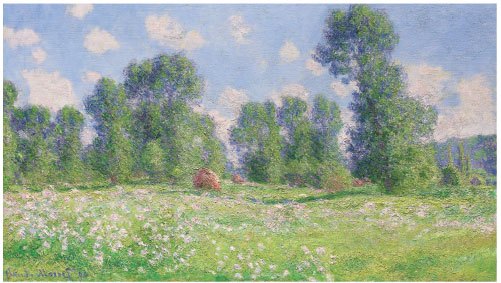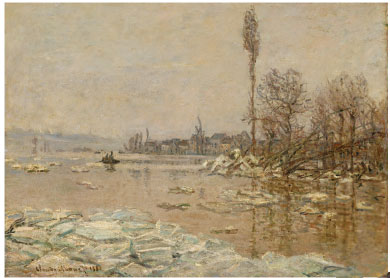A brush with Impressionist art
Updated: 2016-04-29 09:07
By Chitralekha Basu(HK Edition)
|
|||||||
Selected works by two masters of the French Impressionist school, Claude Monet and Edgar Degas, arrive in Hong Kong and Macao as part of Le French May. Chitralekha Basu reports.
Selected works by two pioneers of the French Impressionist school, Claude Monet (1840-1926) and Edgar Degas (1834-1917), are being brought over to Hong Kong and Macao as part of the 34th edition of Le French May. Monet and Degas, with Camille Pissarro, were among the early Impressionists who drastically changed the depiction of the material world in art. By rejecting well-defined outlines and incorporating a playful use of light, enhanced by abrupt brush strokes, the Impressionists would tease and stimulate the viewers' imagination. They had a role in the way artists who came after them would interpret their surroundings.
The Degas exhibition turns the spotlight on a relatively less-known side of his artistic oeuvre. The sculptures on show were put together as more of an exercise. Degas did not even want the public to see these. The collection of 74 bronze figures, molded from the wax sculptures found in the artist's studio after his death, opens tonight at MGM Art Space, Macao. The 17 Monet landscapes showing at Hong Kong Heritage Museum from May 4, on the other hand, are a tad overfamiliar. Cherry-picked from Monet's vast repertoire of around 2,500 artworks, they offer a quick round-up of the master's artistic journey.
Since its very early days in Hong Kong and Macao, Le French May - a festival committed to introducing the defining elements of French culture and lifestyle to this part of the world - has presented the classic and the contemporary side by side. Earlier editions of the festival featured works by the sculptor Auguste Rodin (1840-1917) and the early modernist painter Marc Chagall (1887-1985). This time round, between Degas' sculptures, previously unseen in Asia, and Monet's recognizable and yet always enthralling landscapes, the festival organizers seem to be touching two high points of artistic achievement in 19th century Europe.
Julien-Loc Garin, chief executive officer of Le French May, seems ecstatic about being able to show Monet and Degas at one go. "Artists such as them strongly influenced those who came after them and created a 'revolution' at their time," he says.
"Although they are well-established and well-known masters, we wanted to make use of their artworks to develop art pedagogy and deeper appreciation for them among the general audience," he says. To cater to the demands of a digital-era audience, both exhibitions, he points out, feature content (videos, texts, interactive works, apps, etc.) in addition to the art on show. To those already familiar with these artworks, the printed and audio-visual materials lend a sense of context, providing useful gloss on the milestones of the artists' careers. The ultimate goal, says Garin, is to "deepen the viewer's understanding of the key movements of Western and international art history".
Unvarnished truth
At first glance, the sculptures by Degas, molded from wax originals that were already crumbling away at the time of casting into bronze, are nothing like the wispy, translucent aura painted into the gossamer skirts worn by the dancers in his generic paintings. They can seem a little crude at the outset although the chafed faces and the corroding bodies do convey a sense of purposefulness.
Dalit Lahav-Durst, who curated the show, says Degas could have taken a leaf out of the novelist Emile Zola's book. "Degas, being an enthusiast of Naturalism, embraced Emile Zola's penchant for unvarnished truth, leading him away from potential glamor and snob appeal inherent in the subjects he chose to sketch, draw or sculpt," says Lahav-Durst. "To expose the gritty realism in the lower rungs of contemporary society he scrutinized the urban environment as methodically as if it were a laboratory."
The piece de resistance in this lot is the poly-chromed wax and plastiline figure of Little Dancer, Aged Fourteen (1881), his only sculpture Degas chose to show in his lifetime. Degas gave his pre-pubescent dancer a wig made of human hair, a real tutu with a fabric bodice, ballet shoes and a silk ribbon in the hair. He also gave the little woman a stance (arms folded behind the back) and a look of cold, impassive defiance that viewers sometimes found unnerving.
Lahav-Durst adds, "The aggressive, almost scientific realism with which he chose to represent Little Dancer, Aged Fourteen, and the fact that Degas displayed her in a glass case like a rare object or specimen in a laboratory, contributed to the shocked reactions of both critics and visitors."
Bruno Girveau took on the daunting task of showing Claude Monet's world in a grain of sand. He explains the way the images selected for the show mark the milestones in Monet's career. "The oldest one, The Railroad Station at Argenteuil, dated 1872, could be considered as one of the first 'impressionist' canvases by Monet, even before Impression, Sunrise, 1874," says Girveau, drawing attention to the artist's "fascination for modern machines; outdoor painting; emphasis on atmosphere rather than on meticulous details" in the image. However, as Girveau points out, Argenteuil still has traces of predecessors like British landscape painters John Constable (1776-1837), JMW Turner (1775-1851) or the French watercolorist Eugene Boudin (1824-1898).
"If one looks at Water Lily Pond at Giverny (1917), we realize that Monet's technique has greatly changed over that period of time," says Girveau. "He created a series depicting the same water lily motifs, having no depth or perspective; using brighter and brighter colors... Monet's later works focus on the interactions between water, earth and sky, as influenced by light and changing seasons, and lead to modern art."
Visitors will be encouraged to take a walk through a 3D replica of Monet's Japanese Water Garden in Giverny and try their hand at drawing, Monet-style.
"Multimedia displays based on the Water Garden will offer an original way to discover Monet's technique," informs Girveau. "Every visitor can be an impressionist painter for a little while!"
Contact the writer atbasu@chinadailyhk.com
|
Between Effects of Spring, Giverny, 1890 (above) and Water Lilies, 1907 (below, right), Claude Monet's technique changed considerably. Photos provided to China Daily |
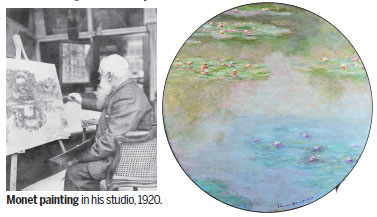
|
|
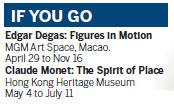
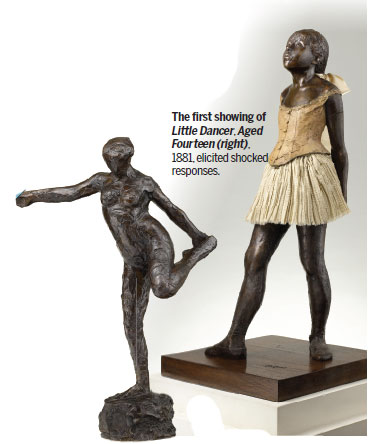
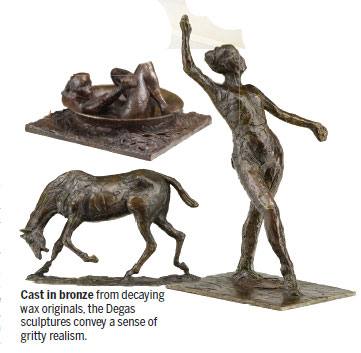
(HK Edition 04/29/2016 page8)
